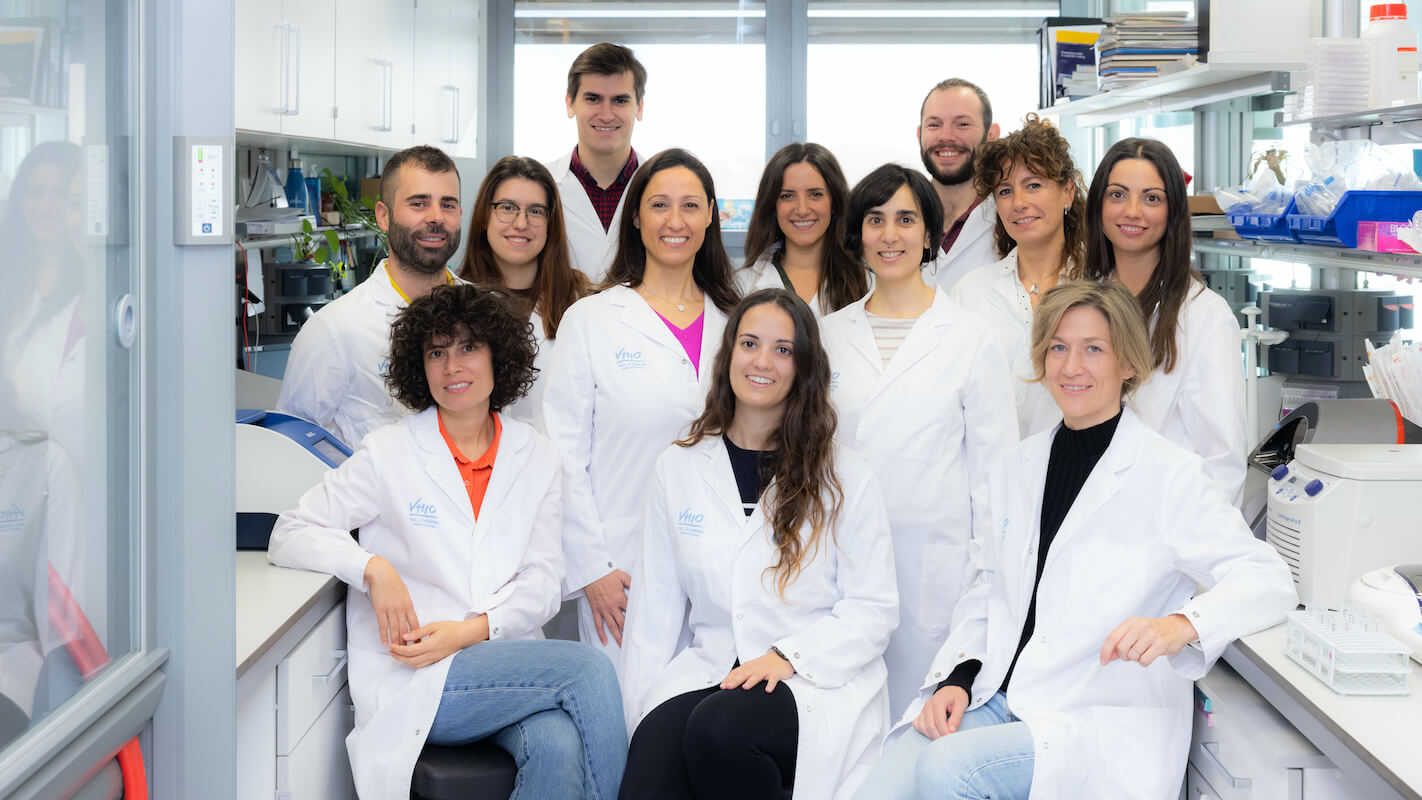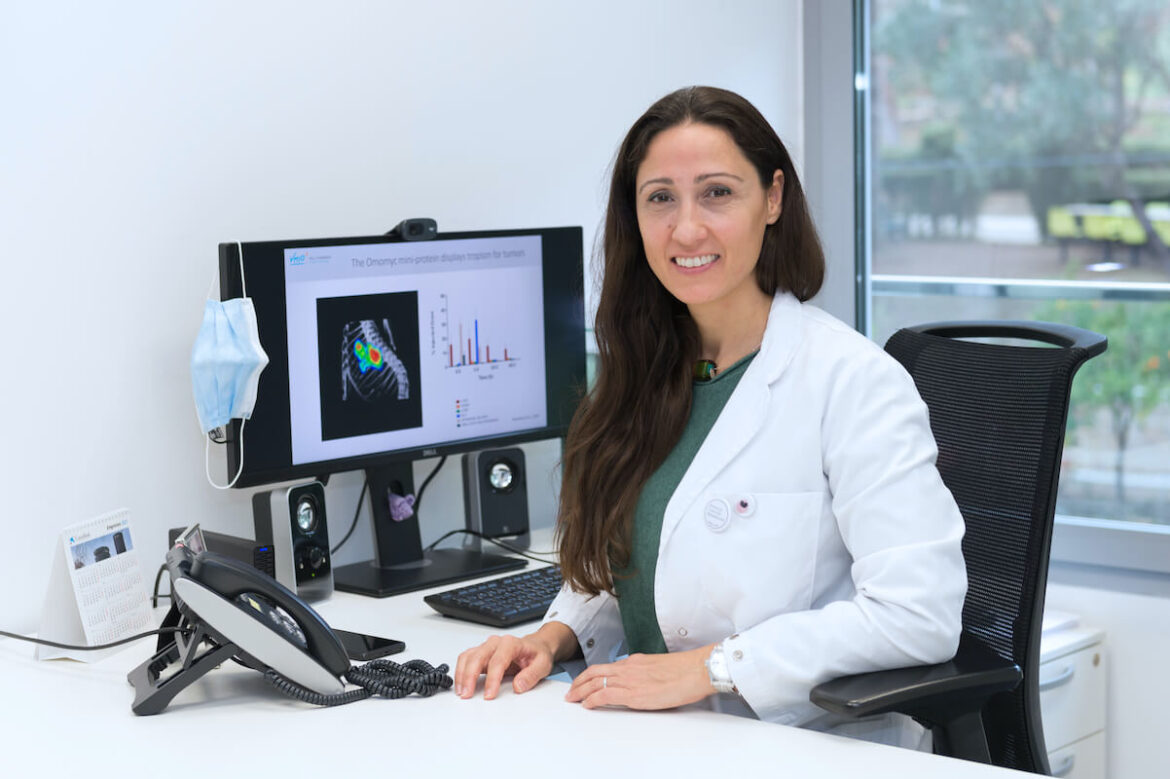While studying biology at the Sapienza University of Rome, Laura Soucek (Velletri, 1973) came across the Myc oncogene, involved in multiple processes essential for the development and progression of cancer. “I thought it was extraordinary immediately because it seemed to play a role in all types of cancer. That was the time when people were starting to say that every cancer was different. But Myc seemed to be a common factor in all of them, so to me it was a unique opportunity because everyone was focusing on different targets and here was one for everyone,” he recalls.
Nearly 30 years have passed since that first encounter and Laura Soucek has dedicated her entire professional career to countering Myc. Since 2014, his research resulted in the creation of the. spin-off Peptomyc, promoted with the support of the Vall d’Hebron Institute of Oncology (VHIO) and the Catalan Institution for Research and Advanced Studies (ICREA). With more than 40 million euros raised since then, mainly private funds, the company is now engaged in its second clinical trial, moving ever closer to bringing its drug to market.
Although Myc had always been considered untouchable, he was known to have a partner, a protein named Max, whom he needed to function. Soucek set out to find him an alternative partner who would deceive and disable him. Before graduating in Biology, he was already studying this oncogene and, when he was doing his PhD, he published his first publication in 1998. The fake partner she devised she called Omomyc and it allowed her, for the first time, to inhibit Myc and cause cancer cells to die. “I remember calling my mother from a telephone booth and saying, “Mom, it worked, it worked! It was an unforgettable moment for me,” she says. In the face of these first promising results, there was initial resistance from the scientific community, who considered his finding to be minor and warned him that it would certainly have side effects and affect non-diseased cells.
Although the Myc oncogene had always been considered untouchable, Laura Soucek set out to find a partner who would cheat and deactivate it.
Soucek left his native Italy and went to the United States, to the University of California (UCSF), where he began the first preclinical trials with mice. “They developed lung tumors that disappeared when Omomyc was activated. It was an extraordinary discovery because it demonstrated its therapeutic impact and because there were no side effects,” he says. The results were published in Nature in 2008, “changing the paradigm worldwide about the possibility of targeting Myc, and other laboratories started working on developing their own inhibitor”.
Along the way, she met oncologist Josep Baselga. He convinced her to move to Barcelona and work at VHIO, where she could do translational research with patients. Soucek arrived in 2011 in the Catalan capital and started using Omomyc on human tumors, specifically brain tumors, and it also worked: “We decided that we had to do something, that we had to take it to the clinic. Despite following medical reviews that were suspicious of her results and did not believe Omomyc could be a drug, she focused on finding a way to develop it so that it could be used as a medicine. When it turned out that Omomyc could penetrate cells, a key factor in being able to function as a drug, its target suddenly seemed closer.
And so it was. Laura Soucek, accompanied by her postdoctoral student Marie-Eve Beaulieu, patented Omomyc as a drug in 2013 and a year later the idea she had had as a young girl while studying was transformed into the spin-off Peptomyc. Launched with savings from both co-founders and funding from the VHIO and ICREA, they set out to seek public funds to begin analyzing whether the company would biotech was viable and profitable. The European Commission, Acció, the Ministry of Economy and CDTI were its first public investors, while the first round was closed in 2016 for €1 million, led by venture capital Healthequity SCR. A year later, came the second round, for 4.2 million euros and this time led by Alta Life Science. In 2020, the third, for €11.4 million and led by the Italian fund Aurora Science.
Peptomyc was created in 2014 and has raised more than €40 million since then, mainly private funding
As resources came in, the team grew, paving the way for the company’s first milestone: “For us, the most exciting moment was getting to the clinical trial in 2021, finally, after so many years.” Focusing on solid tumors —localized in organs and not in the blood—, it began in April of that year with 22 patients who had tried all standard therapies, with very advanced disease, already metastatic. This first human trial was intended to demonstrate the safety of the drug. At the end of the study, eight participants benefited from the drug, administered intravenously, which stabilized their cancer and halted its progression. Among them, Soucek points out, there was one with pancreatic cancer, one of the most complicated and with few efficient current therapies, who had a reduction of the tumor burden to half the initial size. Omomyc thus became the first MYC-inhibiting treatment to successfully complete the first phase of a clinical trial.
Since last November, Peptomyc has been immersed in its second clinical trial, this time combining Omomyc with chemotherapy to test its efficacy in pancreatic cancer, allowing it to treat patients at a less advanced stage of the disease compared to the first trial. It is being carried out at the Vall d’Hebron Hospital, the Institut Català d’Oncologia (ICO), the Hospital General Universitario Gregorio Marañón in Madrid and the Hospital Universitario Miguel Servet in Zaragoza.

Raising 20 million euros and finding a pharmaceutical company
Coinciding with its second clinical trial, Peptomyc has received a 2.5 million euro grant from the European Innovation Council (EIC). It is accompanied by a minimum of 2.5 million euros more equity, which implies that it has to seek private funds to complement the EIC disbursement. For the company, the ideal would be to raise a total of 20 million euros – half from the EIC and half from private investors. “These resources allow us to fully fund the study focused on pancreatic cancer and also allow us to invest in optimizing the cost and industrial production of the drug, and in a new generation of drugs that we want to develop for other types of cancer,” Soucek says.
At this point, the company, with a staff of 16 employees, is also looking to partner with a pharmaceutical company in order to bring its treatment to more patients. Peptomyc expects to be able to reach the market and start marketing its drug by 2028. We are in the famous valley of death: we are right on the edge of success or failure,” says its CEO, who is always thinking about finding funds from wherever it is needed, “and we are always looking for new ways to make it happen,” she says.fundraising, fundraising, fundraising“We never stop,” he repeats, “but without losing the illusion of curing the cancer he has had since he was just over 20 years old.



















